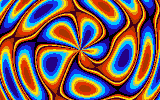I am interested in developments in low frequency radio astronomy.
It is necessary to go to space to extend the range of observation
because the lower frequencies cannot penetrate to the surface
of the earth. The article
Low Frequency Radio Astronomy From Space
states in part:
"The opening of a new spectral window for astronomical
investigations has always resulted in major discoveries,
significant insights into astrophysical processes, and an
enrichment of our understanding of the universe. Interferometric
space or lunar based arrays for imaging the entire sky
below 30 MHz will cover a frequency range which is totally
inaccessible or extremely difficult to observe from the
ground due to ionospheric absorption and scattering. This is
a region of the electromagnetic spectrum which is essentially
unexplored by astronomy but which, at ~10
6 Hz, is likely to
display phenomena as different from those at centimeter
radio wavelengths (~10
9 Hz) as centimeter radio
phenomena are from infrared (~10
12 Hz), infrared are
from the ultraviolet (~10
15 Hz), or ultraviolet are from
the X-ray (~10
18 Hz)."
My interest is partly because cosmologists claim that there are
411 photons per cubic centimetre in the universe. This remarkably
precise figure comes from measurements of the CMBR (Cosmic
Microwave Background Radiation). However this ignores the fact
that over the range from 10^23 Hz to 10^6 Hz the no. of photons
per cubic centimetre grows by a factor of 10^15 and looks a lot
like it intends to keep doing this at lower frequencies. See
background radiation intensity for a graph.
With the new space based measurements I predict that the flux
will continue to grow at lower frequencies and that the 411 photons
per cc of space will ultimately be shown to be wrong by an incredibly
large factor.
Actually I don't think that there are any "photons" in flight at all.
Photons are only a useful concept at the time of emission and
the time of absorption of e/m energy - there are no photons
in flight, just the continuous development of the e/m fields.









